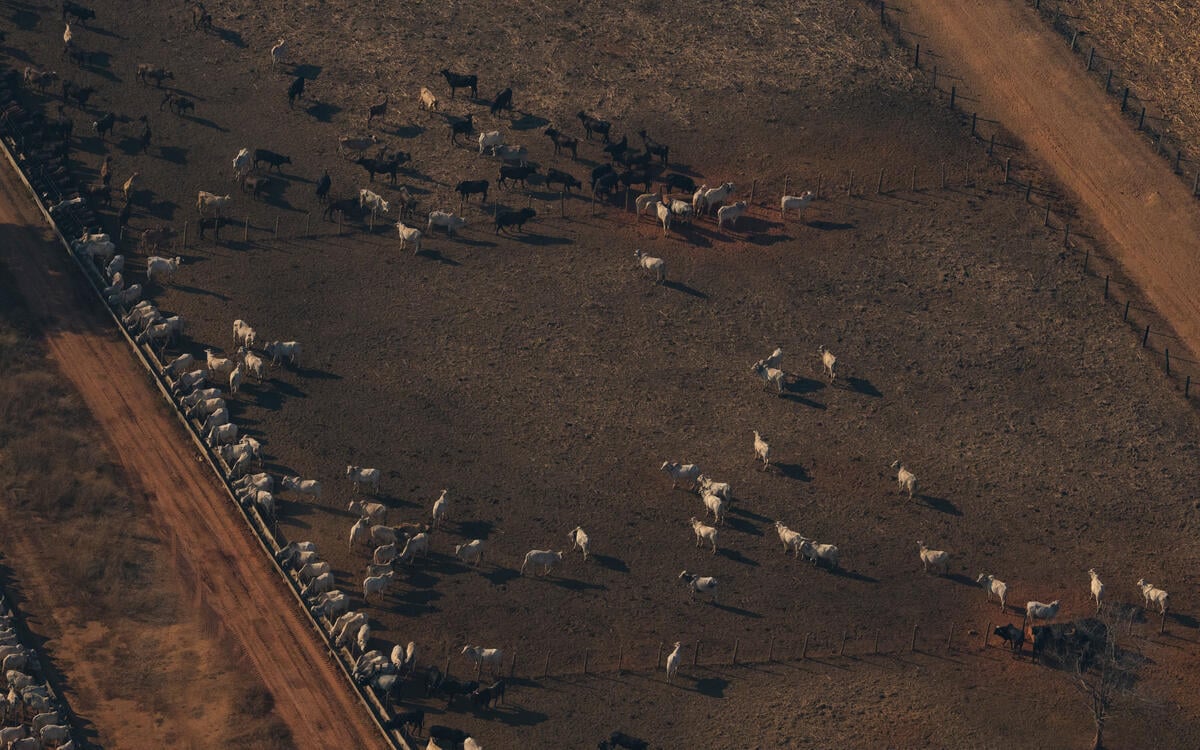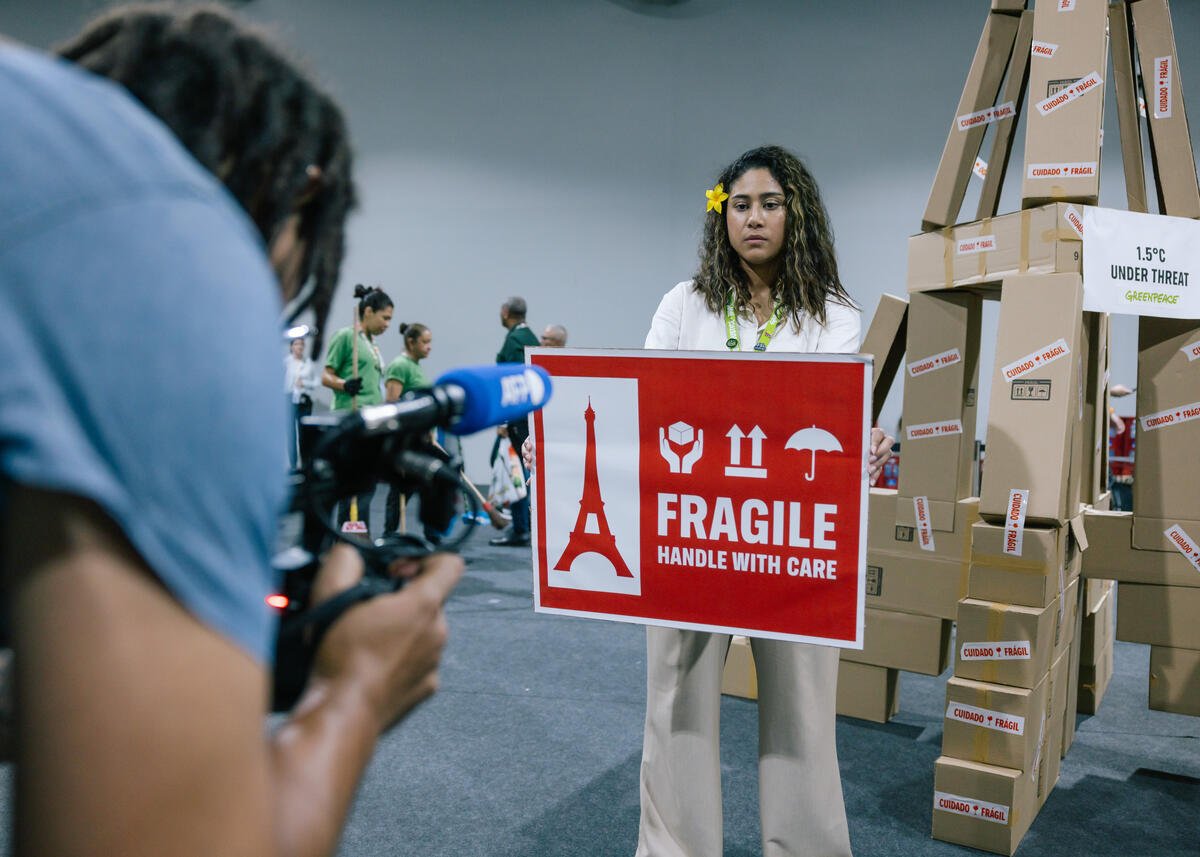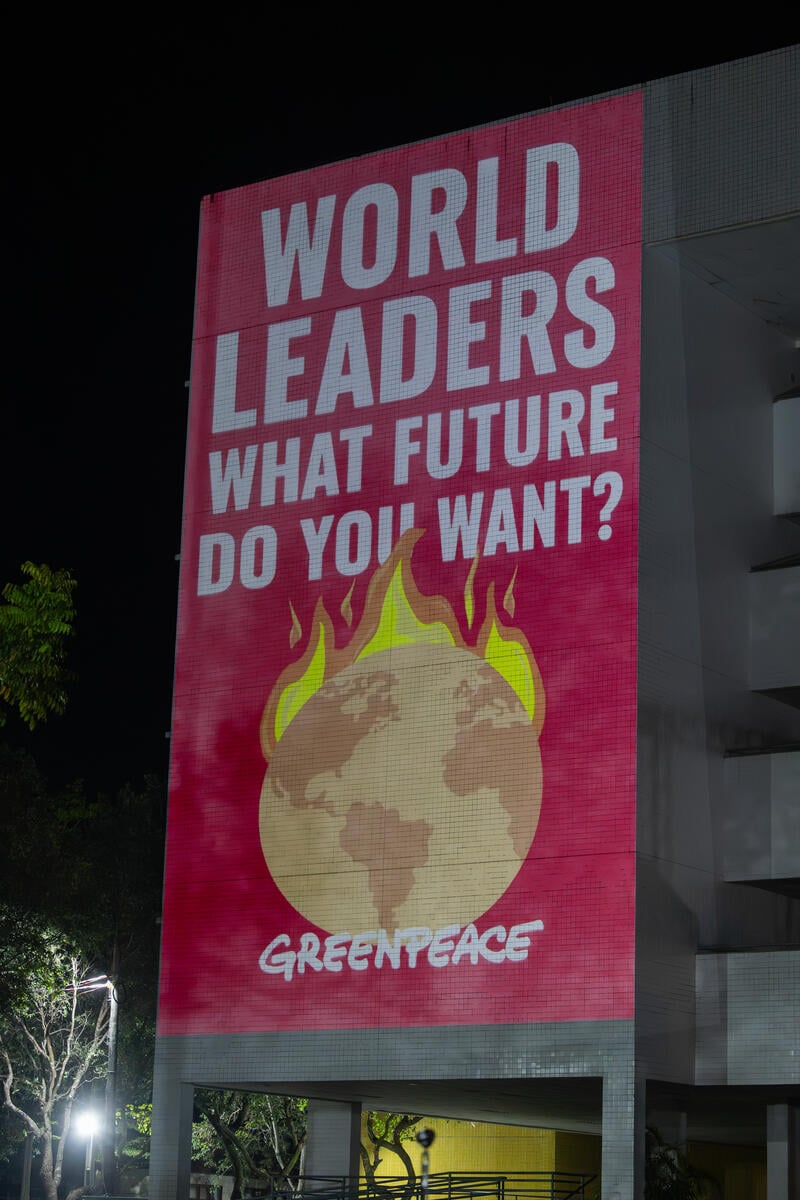This story was originally posted by Greenpeace Korea, in Korean.
It was the third week of August near the end of Korea’s wettest monsoon season. I headed to the Banpo Bridge with the author Seung-yeon Jo and his ‘TAMGU LIFE’ filming crew — to bear witness to the weather extremes induced by the climate crisis firsthand.
“This is bad,” lamented Jo as soon as he saw what’s left by the summer monsoon this year. With the heavy rainfall during the monsoon, parts of the Hangang Park, including the public sports facility and bike path, had been submerged under the thick muddy water. A small ship— where did it come from?—was so completely lopsided that the only visible part was its whitish bottom. Overlooking the flood damages, Jo and I discussed the ramifications of the recent monsoon; how the climate crisis will shape our lives going forward; and whether there is hope in store for humanity.
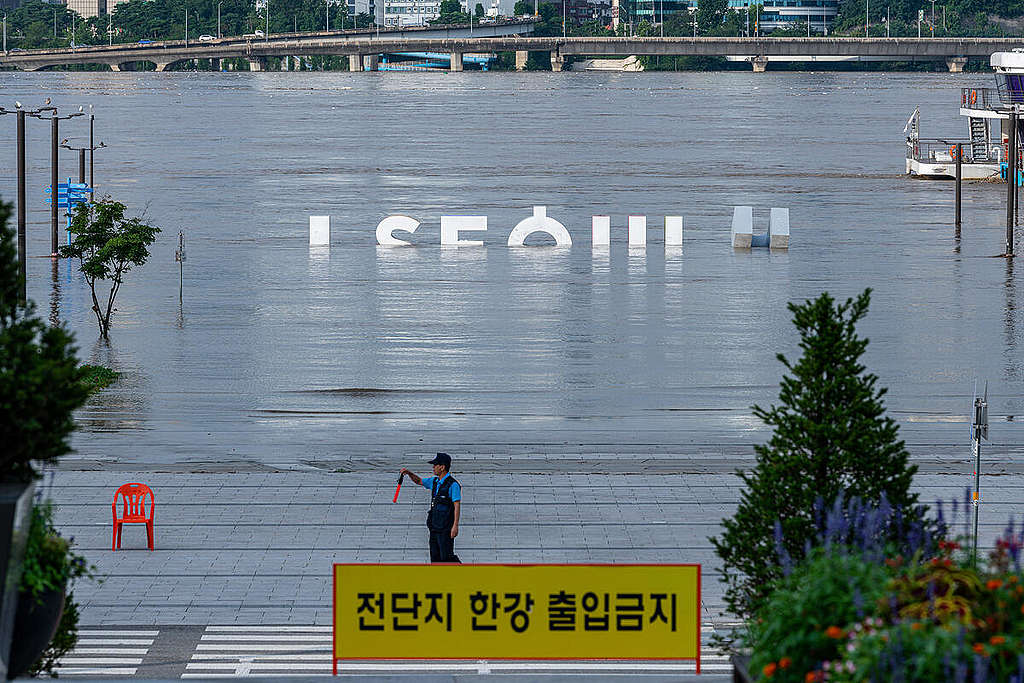
2020 monsoon season—The longest on record. And it’s getting worse
The monsoon this year recorded a total of 42 human casualties—dead or missing—and over 8,000 flood victims. The heavy rain also brought deadly landslides. Agricultural land was inundated, and tens of thousands of livestock died, swept away in the rapids.
According to the Greenpeace analysis of the data compiled by Climate Central, a nonprofit news organisation reporting on climate science data, the floods in 2030 will be nothing like what we have witnessed this year. It will be much worse—with the projected number of flood victims at around 3.3 million.
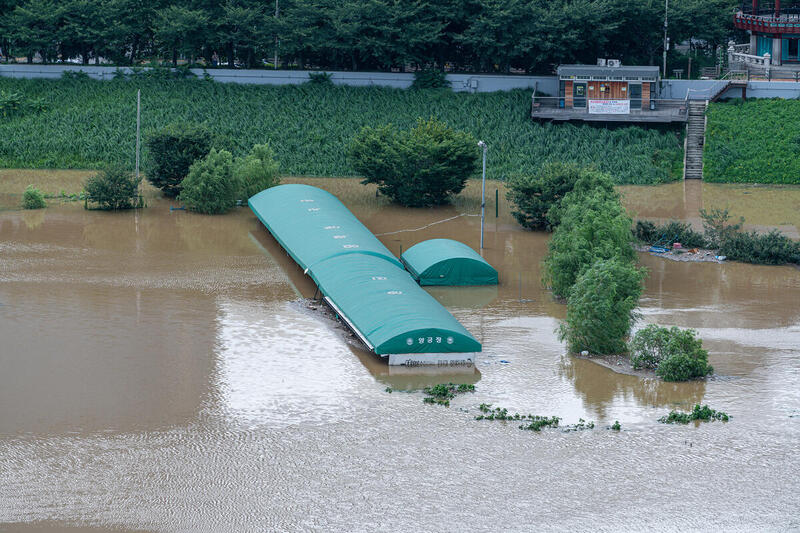
Fast forward 10 years. What would the floods look like in Korea, and which areas will be most affected?
If floods hit Korea in 2030, Gyeonggi Province will experience the most human casualty, followed by Incheon and Seoul. Geographically, Cholla-Namdo and Chungcheongnam-Do will take the biggest hit. Because of the extreme weather conditions, there are more tsunamis in the western region, and both provinces have low altitude.
What’s behind the worsening flood damages?
Climate change. As the planet heats up, Arctic glaciers melt away, and the sea levels rise. The damages will start affecting the coastal communities and ripple towards the rest of the regions.
When the sea level increases by 30 centimetres, so does the frequency of the storms in coastal communities: from every 100 years to every 10 years. If the sea-level increase doubles to 60 centimetres, severe storms could occur every year, as opposed to once every 100 years. All in all, sea-level increase, high tide, and severe storms will aggravate flood damages.
Some countries are dealing with the sea-level rise through floodgates and embankments. Why don’t S. Korea adopt the same approach?
To allow accurate predictions and adequate response to climate disasters, disaster prevention facilities are the absolute musts. However, considering the sea-level could rise as high as 6 meters over the next several centuries, reinforcing prevention facilities alone isn’t enough. Not only that, natural disasters caused by climate change can occur anywhere—in unexpected places in patterns that we can’t possibly predict.
For this reason, the government must take measures to address the root cause, the climate crisis, and implement a plan to curb greenhouse gas emissions. In which case, Korea should comply with the strong recommendations by the scientific communities—cutting the greenhouse gas emissions in half by 2030 and achieving net-zero carbon emissions by 2050.
Is there hope for humanity?
In the Apple commercial featuring a baby sound asleep, his dad promises a gift for his child for 10 years later. Guess what the gift was—net-zero carbon emissions. The ad, ‘A climate change promise from Apple,’ demonstrates the company’s commitment to tackling the climate crisis. Other global companies like Amazon and Microsoft are following suit.
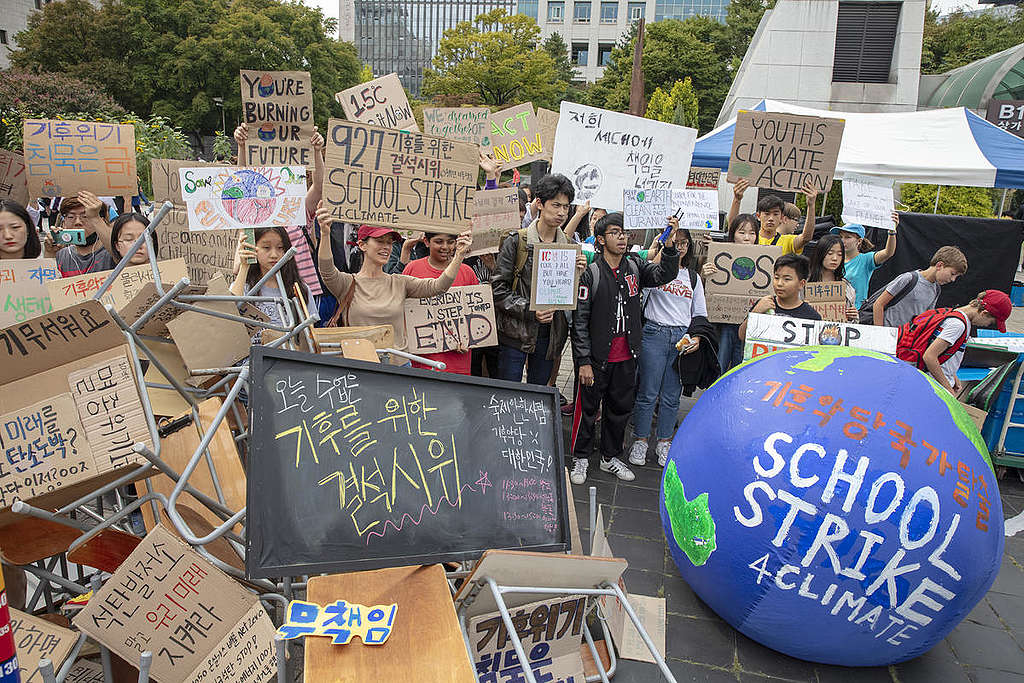
Nations and cities around the world are also getting involved. To date, 1,765 municipalities in 30 countries declared a climate emergency. In Korea, 226 basic local government authorities followed suit—by far, the biggest turnout in the world. The European announced the Green Deal aspiring to become climate neutral by 2050. The U.S. Democratic presidential candidate Joe Biden has pledged that, if elected, he will lead a major diplomatic effort to rally the world to meet the threat of climate change.
Jo strongly believes there is still hope. When humans recognise the gravity of a crisis, they bring out the potential to solve it, which Jo finds contradictorily hopeful. Now, we are living in a state of climate emergency. If we recognise that we’re facing a crisis and come together to act, we can make a huge difference.
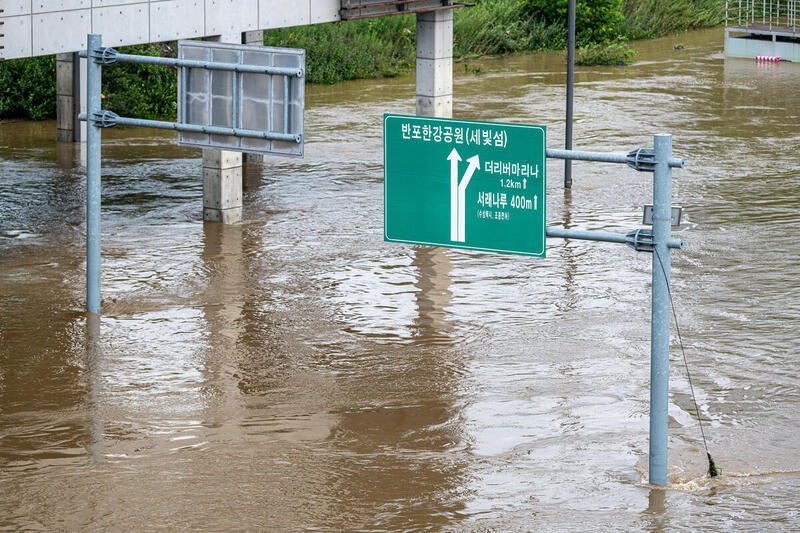
The sites I looked on, over the Hangang Banpo Bridge with Jo, are only the small fragments of the greater climate crisis in all corners of the globe. Nevertheless, it gives us a clear signal. Maintaining the current state of the affairs isn’t an option.
Korean government must declare a climate emergency immediately and implement a goal to cut the greenhouse gas emissions in half by 2030 and to achieve carbon neutrality by 2050. In addition, companies must take responsibility for the climate crisis and switch to renewables. The general public, including the readers of this article, can pay keen attention to what we do everyday: what we eat and purchase—doing our parts to respond to the climate crisis together.
No earth, no humans.
Join us and help solve climate change. Protect our planet.
Click to join the Greenpeace Korea campaign, and watch Jo Seung-yeon’s TAMGU LIFE X Greenpeace <Episode 4> (in Korean).
Justin Jeong is Climate and Energy Campaigner at Greenpeace East Asia.

